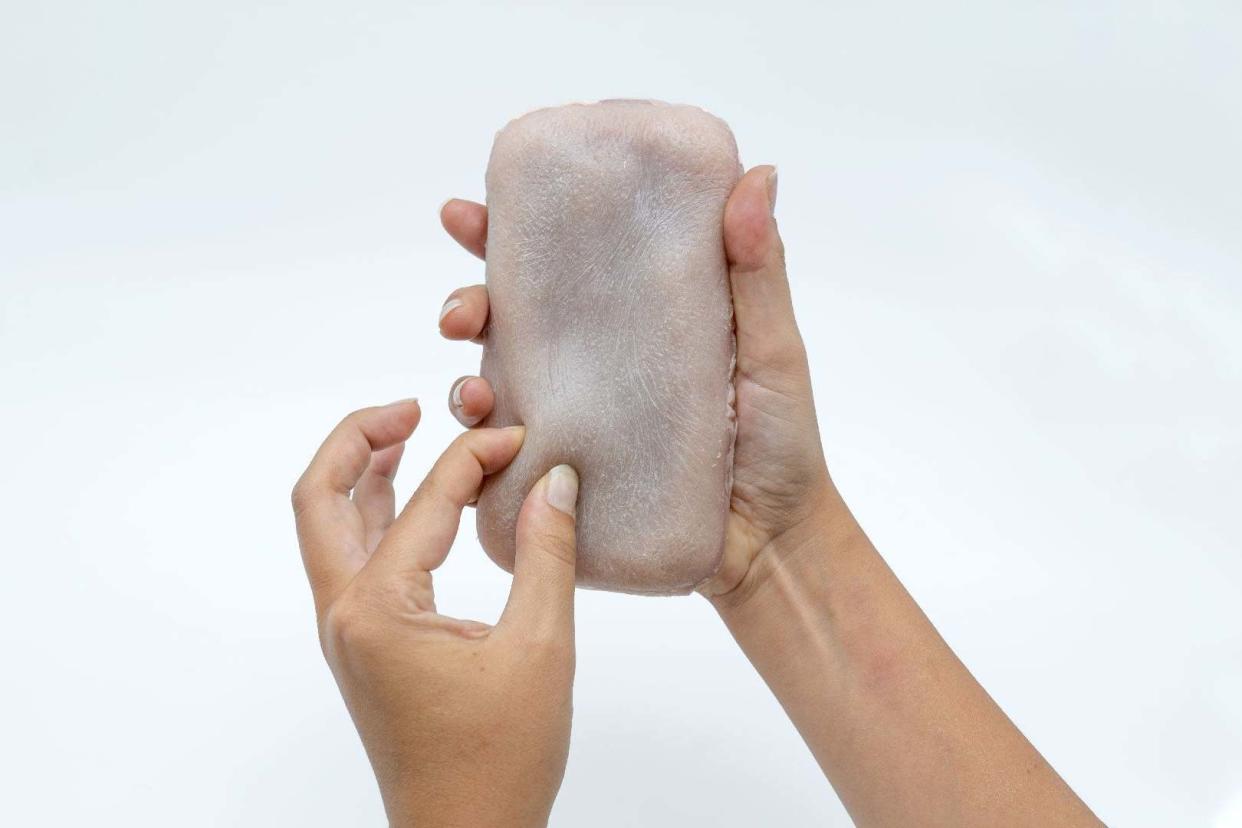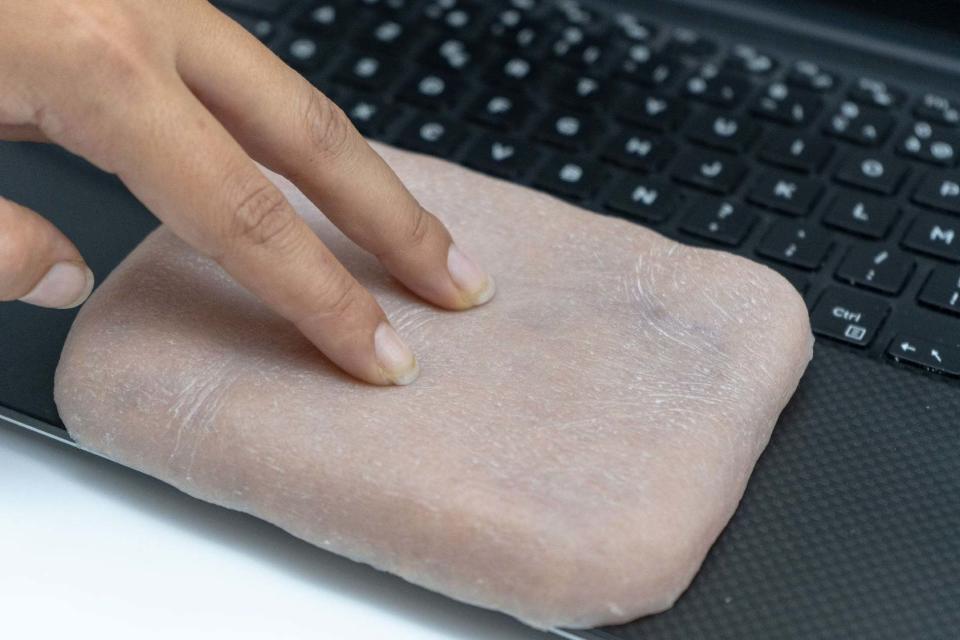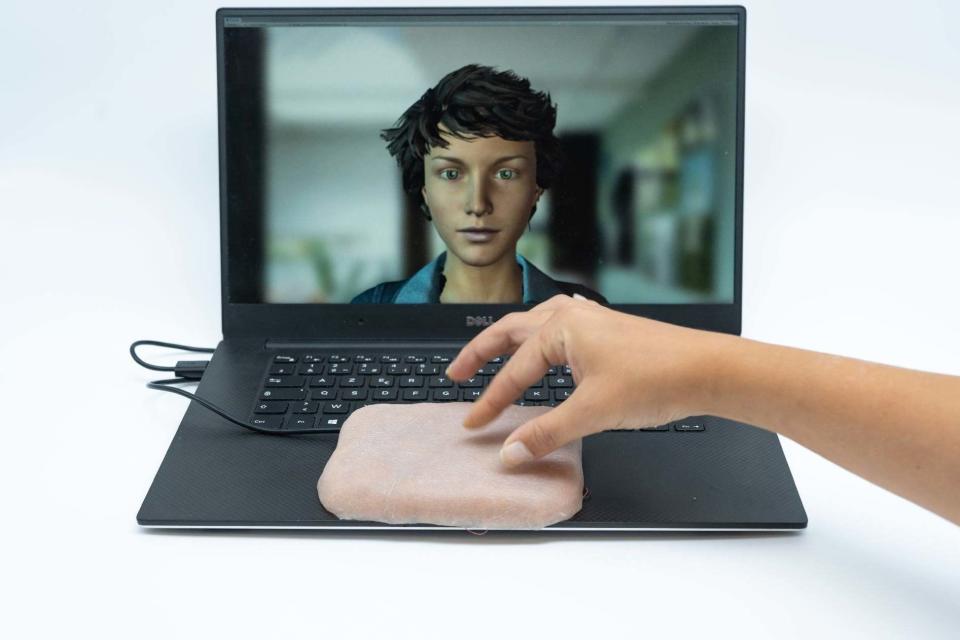Bizarre ‘artificial skin’ makes mobile phones ticklish

Scientists have created an "artificial skin" which makes smartphones and other devices ticklish.
The material, which resembles and mimics human skin, responds to different types of human contact such as tickling, caressing and pinching.
The Skin-On interface can be attached to mobile phones, health trackers and laptop touchpads, in a bid to make them more "human-like".
It was developed by researchers at the University of Bristol in partnership with Telecomm ParisTech and the Sorbonne University.

One of the study’s lead authors, Dr Anne Roudaut of the University of Bristol, acknowledged that the technology “may look unconventional,” but she added “we feel there are strong advantages of using more malleable technologies.”
She explained: “The familiarity of the skin provides a more natural interface for end-users.”
The artificial skin was created using two layers of silicone - one "dermis" tissue style-layer and one fatty "hypodermis" - with an electrode layer in the middle made up of ultra-thin wires acting as sensors.
Two different types of silicone were dipped in pigment and moulded to give the creation a skin-like texture.
The researchers said their artificial skin allows devices to "feel the user's grasp" and has the ability "to detect interactions such as tickling, caressing, even twisting and pinching".
The device then translates these “tactile emotions” by displaying corresponding emojis.

Marc Teyssier, a PhD student at Telecomm ParisTech and a lead author of the study, said: "A strong grip conveys anger while tickling the skin displays a laughing emoji and tapping creates a surprised emoji."
He explained: "This skin has a subtle surface texture - the sensing is performed in the dermis and the hypodermis layer (fat layer) and the elasticity is what allows us to perform expressive gestures such as pinching."
The team believe their work could allow people to have a richer emotional experience while using mobile phones or smartwatches.
"When we are talking to someone face-to-face, we sometimes use touch to convey emotions and more generally enrich the discourse,” Mr Teyssier explained.
"Now that mediated communication is performed through the devices, we lost this communication modality.
"With this project, we tried to combine the best of the two.
"The prototypes we developed propose a possible future with anthropomorphic devices."
The concept of artificial skin has been explored in the field of robotics as scientists attempt to develop androids that look and act like humans.
However, Dr Roudaut and her colleagues said they were more interested in working with everyday devices.
"We have seen many works trying to augment human with parts of machines,” she said. “Here we look at the other way around and try to make the devices we use every day more like us, ie, human-like."

 Yahoo News
Yahoo News 
